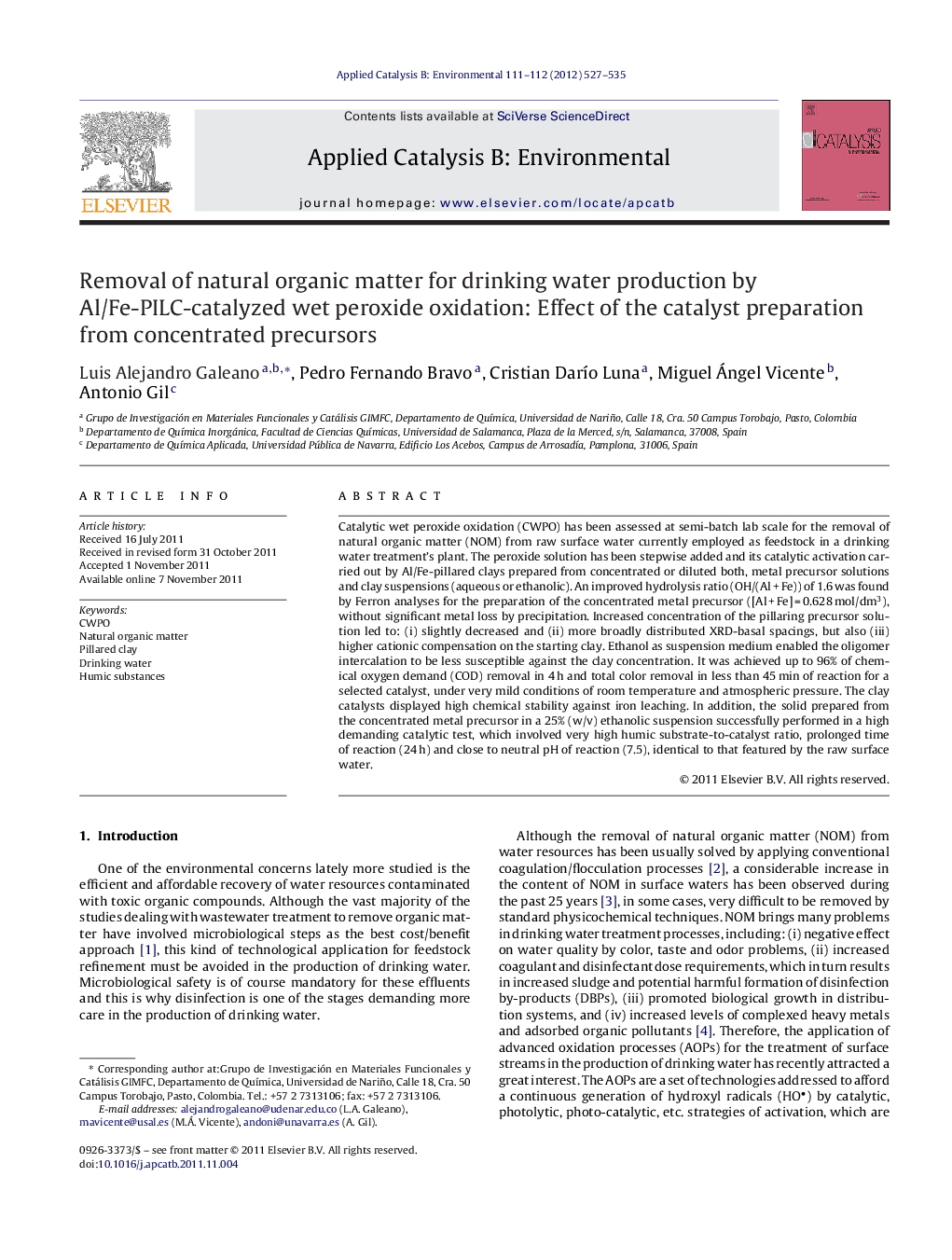| Article ID | Journal | Published Year | Pages | File Type |
|---|---|---|---|---|
| 46503 | Applied Catalysis B: Environmental | 2012 | 9 Pages |
Catalytic wet peroxide oxidation (CWPO) has been assessed at semi-batch lab scale for the removal of natural organic matter (NOM) from raw surface water currently employed as feedstock in a drinking water treatment's plant. The peroxide solution has been stepwise added and its catalytic activation carried out by Al/Fe-pillared clays prepared from concentrated or diluted both, metal precursor solutions and clay suspensions (aqueous or ethanolic). An improved hydrolysis ratio (OH/(Al + Fe)) of 1.6 was found by Ferron analyses for the preparation of the concentrated metal precursor ([Al + Fe] = 0.628 mol/dm3), without significant metal loss by precipitation. Increased concentration of the pillaring precursor solution led to: (i) slightly decreased and (ii) more broadly distributed XRD-basal spacings, but also (iii) higher cationic compensation on the starting clay. Ethanol as suspension medium enabled the oligomer intercalation to be less susceptible against the clay concentration. It was achieved up to 96% of chemical oxygen demand (COD) removal in 4 h and total color removal in less than 45 min of reaction for a selected catalyst, under very mild conditions of room temperature and atmospheric pressure. The clay catalysts displayed high chemical stability against iron leaching. In addition, the solid prepared from the concentrated metal precursor in a 25% (w/v) ethanolic suspension successfully performed in a high demanding catalytic test, which involved very high humic substrate-to-catalyst ratio, prolonged time of reaction (24 h) and close to neutral pH of reaction (7.5), identical to that featured by the raw surface water.
Graphical abstract.Figure optionsDownload full-size imageDownload as PowerPoint slideHighlights► Preparation of Al/Fe-pillared clays from concentrated precursors is evaluated. ► An improved hydrolysis ratio for concentrated Al/Fe metal precursors is found. ► Pillaring in ethanol suspension is less susceptible against the clay concentration. ► The clay catalysts display high NOM removals by CWPO for drinking water production. ► High activity and catalyst stability are shown even under pH of reaction 7.5.
